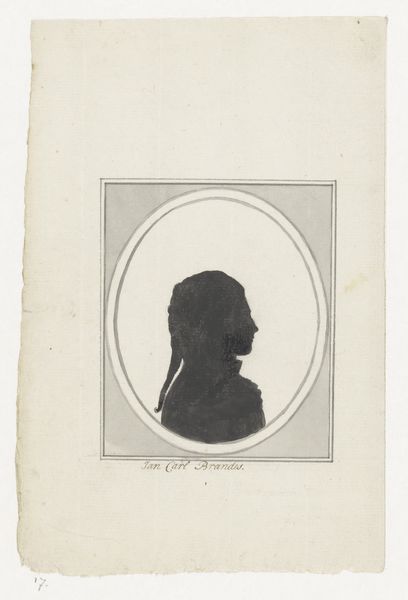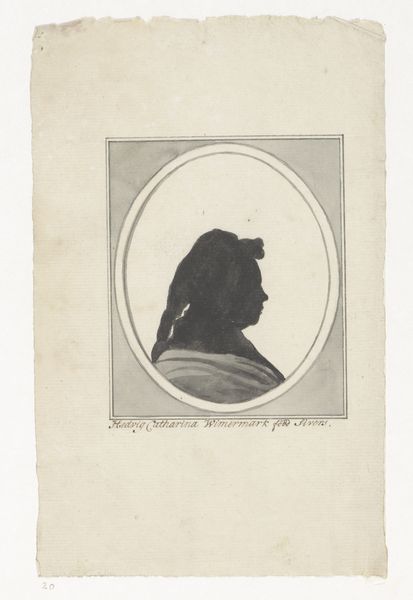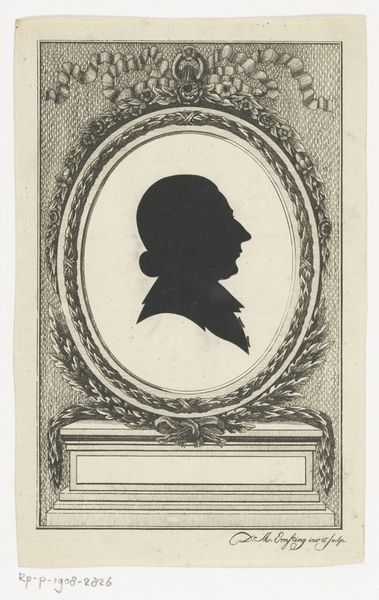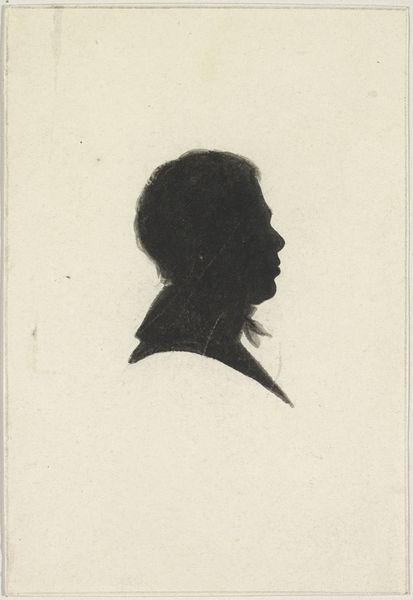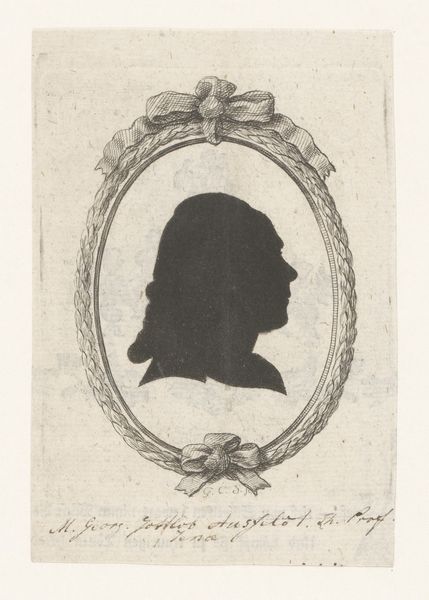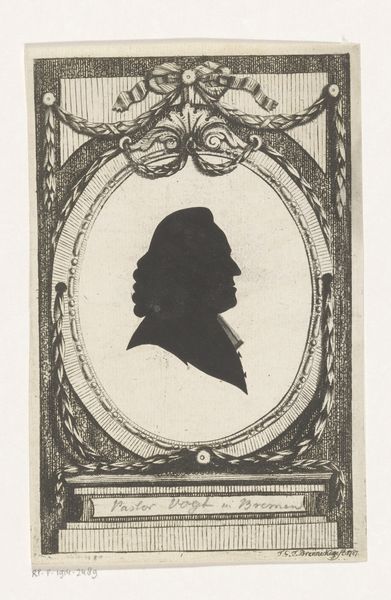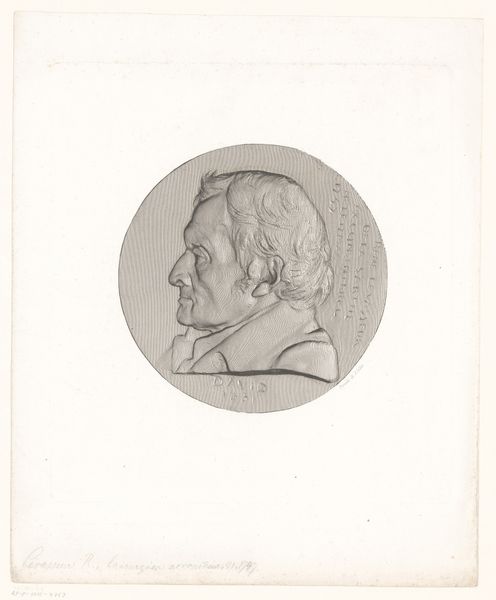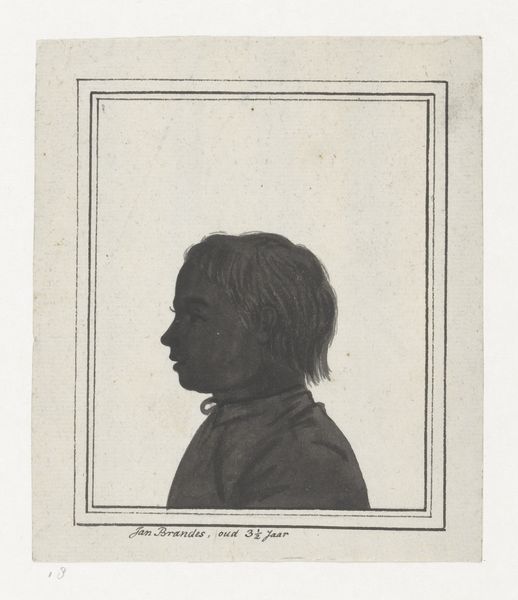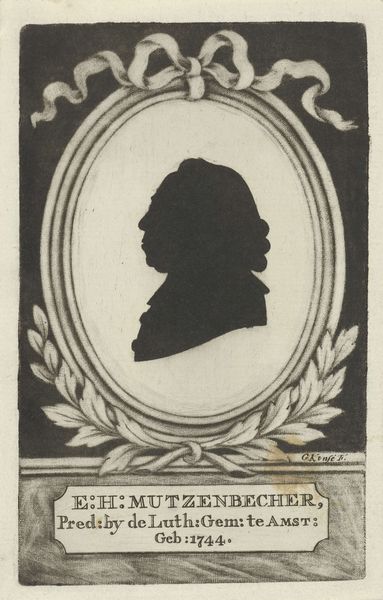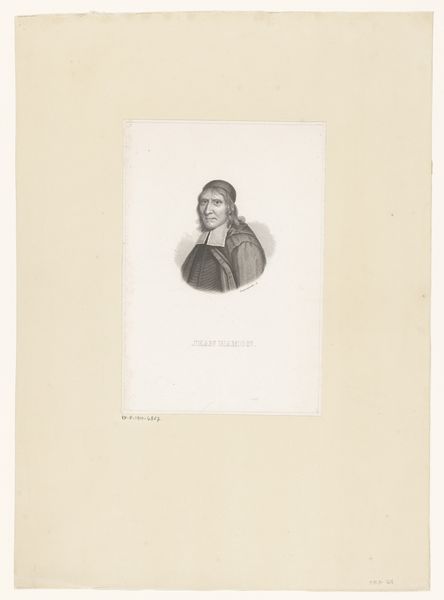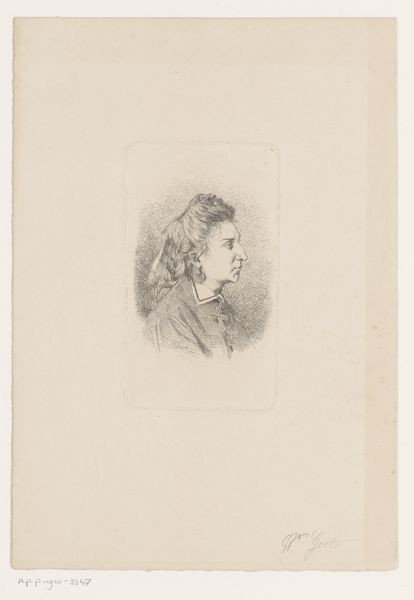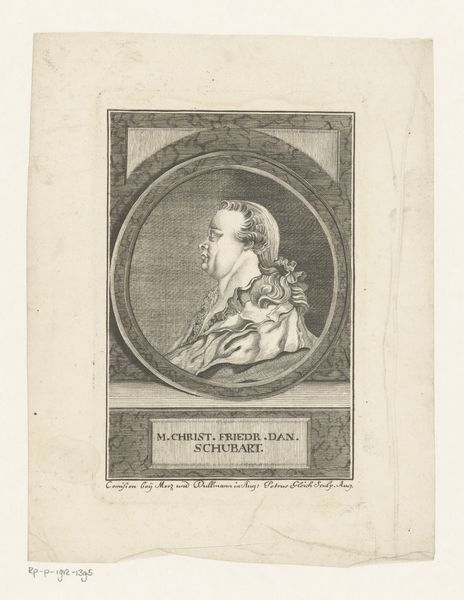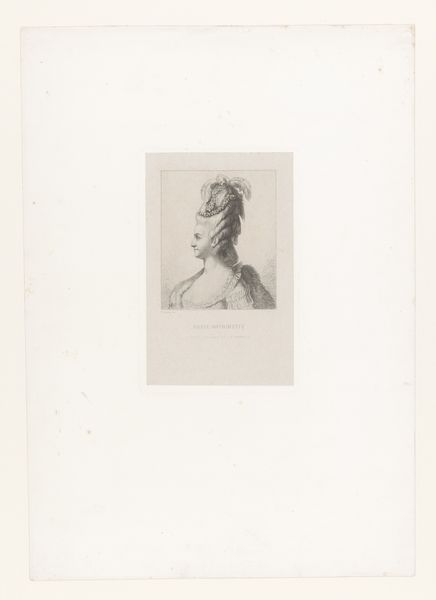
drawing, pencil
#
portrait
#
pencil drawn
#
drawing
#
neoclacissism
#
figuration
#
form
#
pencil drawing
#
pencil
Dimensions: height 165 mm, width 104 mm
Copyright: Rijks Museum: Open Domain
Curator: Looking at this intriguing silhouette portrait of Maria Charlotta Brandes, made with pencil around 1797-1799, I'm immediately struck by how this starkness embodies the subject's stoic presence. Editor: My first impression is all about reduction—pared down, almost ghostly. A face defined by absence, a figure captured without detail, just the essential shape. Curator: Exactly! The artist, Jan Brandes, seemingly wanted to reveal character through the purest of forms, and in its minimalism it somehow screams Neoclassicism. You can almost feel that spirit of revolution influencing even portraiture, favoring simplicity and virtue. It's quite subtle but powerful in its constraint. Editor: Well, to your point, while this portrait feels almost revolutionary in its lack of embellishment, the artist relies on a technique available for mass production. Silhouettes could be cut out quickly, sometimes by machines or even by amateurs at home. Where does it sit then in the artistic hierachy? Curator: Hmm, that's interesting, challenging my previous sentiment maybe! While rooted in accessibility, it presents its own unique kind of creative problem. Brandes doesn't embellish like his peers and contemporaries might do, there's something inherently poetic in extracting the soul or "truth" of a subject via the simplest possible means. Editor: What truly fascinates me is not just *what* is depicted but *how* it was created and in what environment: pencil sketches, graphite in a pencil casing allowing a type of draughtmanship at pace and cheaply available like never before to almost anyone. A far cry from, say, oil paintings produced by an exclusive elite. Curator: I can appreciate that – pencil making accessible art. And I find this a rather graceful piece; the overall effect is far from crude. I keep thinking about how capturing a person’s likeness used to be this elaborate ritual reserved for the elite, requiring extensive sittings. And then, suddenly, with these profiles, a kind of democratization enters the art world. Editor: A massification through materiality. What do you make, then, of these subtle watery stripes at the neck of Maria Charlotta Brandes? Curator: I suspect they are included by Brandes to gently humanize the figure. By hinting at the drape of fabric – implying an ephemeral sense of body rather than austere statue. And ultimately revealing an artist unwilling to let process erase soul. Editor: It seems that we've revealed in this silhouette both an almost radical departure in materials with hints to new freedoms within class but yet tradition lingers through portraiture’s continued emphasis on the individual.
Comments
No comments
Be the first to comment and join the conversation on the ultimate creative platform.
